In this article, I’ll be taking you on a fascinating journey through the skies of Florida, where we’ll explore the majestic world of birds of prey.
From soaring eagles to stealthy hawks, Florida is home to a diverse array of these awe-inspiring creatures.
Join me as we uncover 17 remarkable types of birds of prey that call this beautiful state their home.
Let’s spread our wings and begin this captivating adventure together!
| Image | Bird | Features | Price |
|---|---|---|---|
 |
| 9.7 | Check Price |
 |
| 9.5 | Check Price |
 |
| 9.1 | Check Price |
 |
| 8.8 | Check Price |
 |
| 8.6 | Check Price |
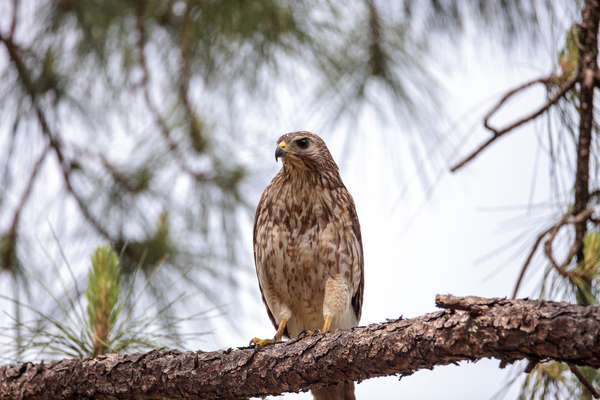 |
| 8.2 | Check Price |
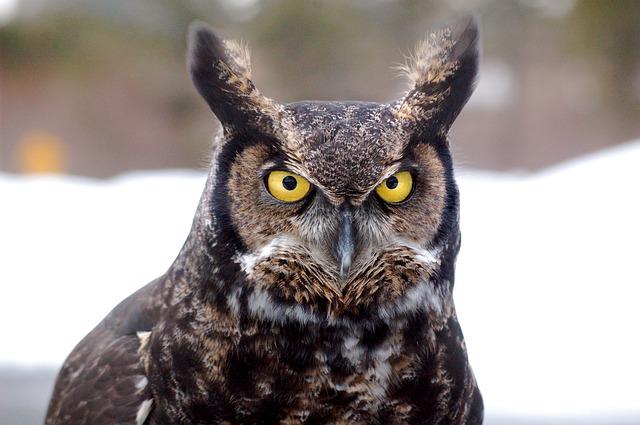 |
| 8 | Check Price |
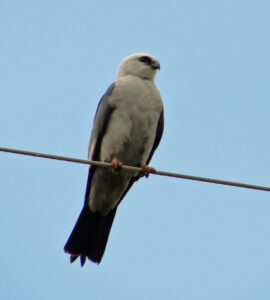 |
| 7.7 | Check Price |
 |
| 7.4 | Check Price |
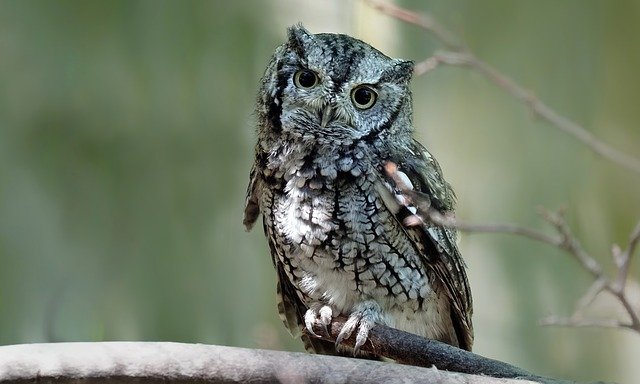 |
| 7.2 | Check Price |
 |
| 9.5 | Check Price |
 |
| 9.5 | Check Price |
 |
| 9.5 | Check Price |
 |
| 9.5 | Check Price |
 |
| 9.5 | Check Price |
 |
| 9.5 | Check Price |
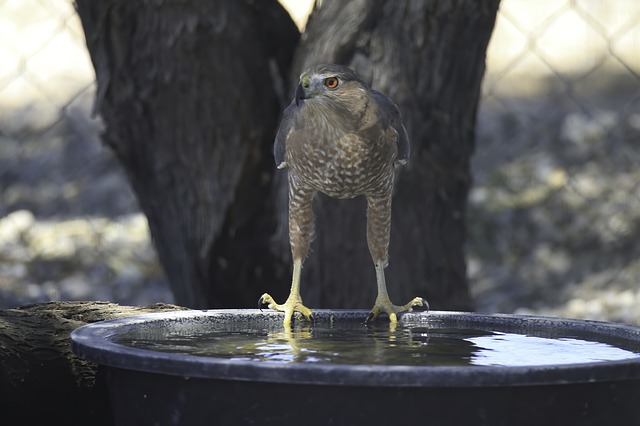 |
| 9.5 | Check Price |
If you don’t have the time to read the whole article, check out this video on Birds of Prey in Florida for a quick understanding.
Types of Birds of Prey in Florida
1. Golden Eagle

Golden Eagles have dark brown backs, lengthy brown wings, and long tails with white patches.
The bottom of the tails has some white and golden coloring towards the rump, while the bird’s belly and breast will be dark brown.
This bird has a brown facial coloration at the rear of the neck and head with a gold coloration.
These birds have hooked black and yellow beaks that are sturdy and medium in length.
These birds are excellent hunters with very keen and sharp eyesight to spot their prey from miles.
They normally hunt rabbits, hares, and squirrels.
They may be found in a variety of settings, including the arid, grassland, farms, and coniferous forests, though they tend to forage near the mountains, hills, and highlands.
Their hideouts and nest are built in very heightened and elevated locations, and their nest is also huge because they tend to remain there when mating season is to come.
Below are the characteristics of the Golden Eagle,
| Scientific Name | Aquila chrysaetos |
| Family Name | Accipitridae |
| Length | 75-100 cm (30-40 in) |
| Weight | 3.6-6.3 kg (8-14 lbs) |
| Wingspan | 1.8-2.34 m (6-7.7 ft) |
| Habitat | Mountains, cliffs, open landscapes, and forests |
| Food | Small mammals, birds, and occasionally carrion |
2. American Kestrels

The tails of kestrels are long and square-tipped, and the bird’s belly is white.
The upper chest is white with certain rust coloring, while the rear of the skull is rust-colored with a black stripe in the back center.
There is a large grey stripe over the eyes and a rust-colored cap.
Female Kestrels have rust-colored wings instead of slate, and their bills are tiny and curled orange and grey.
They like to hunt in areas with fewer trees, and they have a decent bird view of all the land where they might be finding their prey.
They are drawn to breeding boxes, so if you have seen several local Kestrels, put one out to see if a breeding pair will move in.
Kestrels have been seen to sit close to hunt for and catch moths drawn to the spotlights.
Kestrels also stockpile food during times of scarcity.
Below are the characteristics of the American Kestrels,
| Scientific Name | Falco sparverius |
| Family Name | Falconidae |
| Length | 20-31 cm (8-12 in) |
| Weight | 80-150 grams (2.8-5.3 oz) |
| Wingspan | 51-61 cm (20-24 in) |
| Habitat | Open fields, grasslands, deserts, and urban areas |
| Food | Insects, small mammals, birds, and reptiles |
3. Barred Owl

The backs of Barred Owls are brown and white, with broad wingspans and small, rounded tails with brown barring on white.
The face is a blend of brown and white that seems nearly greyish, and the owls have rounded heads with no ear tufts exposed.
The beak of these birds are tiny, robust, and curled yellow.
These birds live in wilderness and woods with enough forests and plenty of deciduous and green trees.
During the daytime, they prefer staying in the cavities present in trees.
They feed rodents, crawlers, snakes, tadpoles, mice, and squirrels.
The Barred Owl, which may be found across Florida, has a lifetime of around ten years in the wild and two decades in confinement.
These birds are typically found near water.
They are occasionally active throughout the day and have a highly distinctive sound.
Below are the characteristics of the Barred Owl,
| Scientific Name | Strix varia |
| Family Name | Strigidae |
| Length | 40-63 cm (16-25 in) |
| Weight | 500-1000 grams (1.1-2.2 lbs) |
| Wingspan | 96-125 cm (38-49 in) |
| Habitat | Deciduous and mixed forests, swamps, and wooded areas near water bodies |
| Food | Small mammals, birds, amphibians, and reptiles |
4. Broad Winged Hawk

Broad-winged Hawks have brown backs and brown tops with white undersides on their long, pointed, and wide brown wings.
Their brown tails are small and angular, with white and black stripes undersides, and brown tops.
This bird’s belly is white with certain faint red streaking that gets more noticeable near the bird’s breast.
During the breeding season, the Broad-winged Hawk may be located in the Florida Panhandle, but they can also be seen in the middle regions of the state during migration and the winter at the southern point of the state.
They have a lifetime of about 12 years, with the eldest known example living to be 18 years and four months old.
These birds are easily found in dense forests and woods that are deep.
Nevertheless, they are spotted in huge flocks when they tend to migrate then.
They can be easily seen along the coastlines.
They tend to feed on reptiles, rodents, insects, and fish.
Below are the characteristics of the Broad Winged Hawk,
| Scientific Name | Buteo platypterus |
| Family Name | Accipitridae |
| Length | 35-46 cm (14-18 in) |
| Weight | 260-610 grams (9-21 oz) |
| Wingspan | 81-110 cm (32-43 in) |
| Habitat | Deciduous and mixed forests, often near water bodies |
| Food | Small mammals, birds, reptiles, and insects |
5. Black Vulture

These birds’ bodies are completely black, which doesn’t help their terrifying reputation.
Like other birds in your nightmares, Black Vultures devour mostly dead flesh.
The second of Florida’s vultures, Black Vultures, are almost entirely black or dark grey.
The black vulture beats its wings for a few seconds before gliding for a few seconds.
The wings are broad but not very lengthy.
The primary plumage’s base stays white, resulting in a whitish area under the wing’s border.
The tails are short and rectangular, barely reaching the edge of the curled wings.
They tend to feed on dead animals that are easy prey, and they will feed on the carcass of other animals or a leftover from other predators.
While feeding, they end up in a flock feasting on the dead body that they notice.
Below are the characteristics of the Black Vulture,
| Scientific Name | Coragyps atratus |
| Family Name | Cathartidae |
| Length | 56-74 cm (22-29 in) |
| Weight | 1.6-2.3 kg (3.5-5.1 lbs) |
| Wingspan | 132-165 cm (52-65 in) |
| Habitat | Open areas, forests, urban and suburban areas |
| Food | Carrion, carcasses, and occasionally small live prey |
6. Red-shouldered Hawk

These are mediocre in size with huge wingspans.
The tips of their wings are curved, and their tails are of decent length, which spreads out when they soar high in the sky.
They can be identified in the woods having a temperate temperature.
Moreover, they reside in places close to marshlands and flowing water.
They create nests made up of sticks, and the most favorable space they are most likely to make is in the hollow barks of the tree.
They fly at very high altitudes when they tend to migrate.
They tend to have their mating and breeding in forests and a green environment where ample trees and greenery are everywhere.
Multiple times they have been observed mating in places near lakes and water, and also, they do it in neighborhoods with a fair amount of population.
Despite having extremely similar dietary and ecological needs, red-shouldered raptors have been observed breeding without interfering with the breeding of other species.
Even though these species have been known to live for up to 20 years, only a small percentage make it that far, and barely half make it through their first year.
Below are the characteristics of the Red-shouldered Hawk,
| Scientific Name | Buteo lineatus |
| Family Name | Accipitridae |
| Length | 43-61 cm (17-24 in) |
| Weight | 550-1,050 grams (1.2-2.3 lbs) |
| Wingspan | 91-127 cm (36-50 in) |
| Habitat | Deciduous forests, swamps, and wooded areas near water bodies |
| Food | Small mammals, birds, reptiles, amphibians, and insects |
7. Great Horned Owl

The Great Horned Owl has a mottled grey and brown back, as well as large, arched wings and medium-length tails.
This bird’s belly and breast are the same hues, but lighter, and a patch of foxy-brown can be seen occasionally.
They eat a variety of animals, with their big size assisting them.
They spend the entire year in Florida, nesting in towering trees in farm areas and woodlands.
They can be found in greater numbers in the state’s northern wildness.
These birds prefer young, open forests, especially if there are plenty of pastures or fields nearby where they may hunt.
However, they may be found in various habitats, including deciduous and evergreen woods, deserts, marshes, tundra, and even the suburbs
These flying creatures hunt any tiny-sized to moderate-sized prey, including squirrels, swans, and even ducks.
The mighty Owl is found all across Florida, and sometimes their nests can also be found in Florida.
Their nest has a large appearance and seems like they have been made in quite a rush.
Below are the characteristics of the Great Horned Owl,
| Scientific Name | Bubo virginianus |
| Family Name | Strigidae |
| Length | 46-66 cm (18-26 in) |
| Weight | 900 grams – 2.3 kg (2-5 lbs) |
| Wingspan | 91-153 cm (36-60 in) |
| Habitat | Diverse habitats including forests, grasslands, and urban areas |
| Food | Small mammals, birds, reptiles, amphibians, and occasionally larger prey |
8. Mississippi Kite

Mississippi Kites have a blend of black and gray on their dorsal side; they have elongated gray wings that are sharp at the ends and white on the secondary they possess lengthy squared tails, which may be black or dark gray on the apex and gray and white below, with blackish tips.
The wings are gray from below, but with white reaching out towards the middle section, the upper portion of the upper wing, and the breast and belly are also white.
They have a white face with a broad black vertical line between the eyes, and their bills are tiny, hefty, and hooked yellow and black.
These birds like broad open regions of grassland and woods with hard trees, but they may also be found in suburban settings.
Bees flies, and other huge insects satisfy their need.
Snakes and rats have been known to become their prey when they get in their way.
Their lifespan is between 10 and 12 years, and they tend to keep their area.
Their nests are built near a wasp’s nest, and it is thought that they do so to protect their young.
Below are the characteristics of the Mississippi Kite,
| Scientific Name | Ictinia mississippiensis |
| Family Name | Accipitridae |
| Length | 30-36 cm (12-14 in) |
| Weight | 230-350 grams (8-12 oz) |
| Wingspan | 76-84 cm (30-33 in) |
| Habitat | Open woodlands, riparian areas, and grasslands |
| Food | Insects, small mammals, birds, and sometimes reptiles |
9. Osprey

Ospreys are huge hawks with striking forms.
Their bodies are slender, with long, narrow wings and long legs, despite their size.
The wings of ospreys have a characteristic bend, generating an M shape, Ospreys are whiter than other raptors because they have a brown upper body and a white underside.
The wings are largely white from below.
A thick brown line runs through the eye.
Ospreys are notorious for diving into the water and hunting the fish out of their comfort zone.
Being carnivorous birds that mainly feed on the flesh of fish, the major component of the diet is fish.
This is the reason why they make their nests near water bodies.
They hunt their prey from shallower water.
Apart from most species of duck hawk, they can be found in every continent except for Antarctica, and in Florida, they can be seen throughout the year.
The Osprey dives feet-first, catching food in its claws if a fish is near enough to the surface.
It focuses on local species such as flounder, smelt, mullet, bullhead, smelt, sucker, and gizzard shad.
Apart from fish, it only consumes small animals, birds, and reptiles on rare occasions, presumably when fish are few.
Below are the characteristics of the Osprey,
| Scientific Name | Pandion haliaetus |
| Family Name | Pandionidae |
| Length | 55-60 cm (22-24 in) |
| Weight | 1.0-2.0 kg (2.2-4.4 lbs) |
| Wingspan | 150-180 cm (59-71 in) |
| Habitat | Near bodies of water, such as coasts, lakes, and rivers |
| Food | Fish (primarily), occasionally small mammals and birds |
10. Eastern Screech Owl

The Eastern Screech-Owl is a short-legged bird with a big head.
It has rounded wings and a short, squared tail.
Its head has tipped ear tufts that are typically high, giving it a distinctive look.
These birds might be grey or mostly reddish-brown in color.
The color of their eyes is yellow.
Forages at night and dusk.
Hunts mostly by perching and then flying down to catch food on the ground or in the vegetation.
Flies in the air are also caught.
They Can find prey both visually and audibly.
The majority of the creatures are huge insects and tiny rodents.
Dietary diversity is extensive.
Bees, caterpillars, bugs, and other big insects are among the creatures it eats.
Rats and other rodents, voles, and occasionally bats are caught, as well as tiny birds, snakes, frogs, snails, grubs, crayfish, and a variety of other small critters.
Their habitat is mainly green parks and suburban areas, and they are considered human-friendly, causing no harm or threat to humans.
They are the smallest owls in Florida and are found throughout the year.
They even do not migrate in winter and cold months.
Despite this fact, they are not seen very commonly.
Below are the characteristics of the Eastern Screech Owl,
| Scientific Name | Megascops asio |
| Family Name | Strigidae |
| Length | 18-25 cm (7-10 in) |
| Weight | 110-198 grams (3.9-7.0 oz) |
| Wingspan | 46-61 cm (18-24 in) |
| Habitat | Forests, woodlands, suburban areas with trees |
| Food | Mainly insects, small mammals, birds, and reptiles |
11. Swainson’s Hawk

These are big hawks with short tails and broad wings.
Most Swainson’s Hawks are soft birds with black or brown breasts and brown or grey upper parts.
However, they can be extremely diverse.
The majority of males have grey hair, whereas the majority of females have brown hair.
Dark specimens have diminished contrast on the underparts, ranging from reddish to nearly entirely black.
In Florida, Swanson’s hawks can be seen in April.
They spend all of their summers in Florida breeding and feeding, but September is the time when they pack their stuff to migrate.
They have very astonishing potency of migrating about 6000-7000 miles, which is so magnificent even for a hawk.
Below are the characteristics of the Swainson’s Hawk,
| Scientific Name | Buteo swainsoni |
| Family Name | Accipitridae |
| Length | 46-61 cm (18-24 in) |
| Weight | 700-1,400 grams (1.5-3.1 lbs) |
| Wingspan | 117-137 cm (46-54 in) |
| Habitat | Open grasslands, prairies, and agricultural areas |
| Food | Mainly insects, small mammals, birds, and reptiles |
12. Turkey Vulture

Turkey vulture is very similar to the black vultures, but the turkey vultures have a reddish face and a relatively shorter neck.
They also have a similar diet, which is mainly focused on dead animals.
Turkey vultures can smell and detect dead animals from 8-9 miles due to their strong sense of olfaction, so finding food is not a problem that they might face.
Their entire existence is tailored to their eating habits.
They have hairless heads so that food residues don’t attach to them.
In addition, their stomachs release strong acids to aid in the digestion of everything they consume.
In Florida, they’re rather prevalent.
Look for huge birds with a V shape on their wings if you wish to see them.
These birds forage for carrion across open or somewhat wooded areas, keeping an eye on the earth and other scavengers.
Carrion may also be detected by scent, and they have a keen sense of smell.
The majority of the food is carrion.
Feeds mostly on dead animals, with a preference for those that have just died.
They eat decaying vegetative materials, live insects, and occasionally fish in drying-up ponds.
Below are the characteristics of the Turkey Vulture,
| Scientific Name | Cathartes aura |
| Family Name | Cathartidae |
| Length | 64-81 cm (25-32 in) |
| Weight | 1.4-2.3 kg (3-5 lbs) |
| Wingspan | 160-183 cm (63-72 in) |
| Habitat | Diverse habitats including forests, grasslands, and urban areas |
| Food | Carrion, primarily dead animals |
13. Cooper’s Hawk

Cooper’s Hawks have blue-gray backs and lengthy blue-gray wingspans with white and black stripes on the undersides of the wings and rust coloring in the upper middle.
Except for a thick black or blue-gray crown, these birds’ faces are normally a combination of rust and white over most of the face.
These birds have yellowish or black beaks that are short, thick, and hooked.
Females will be around 2 inches longer than males in total length, and youngsters will be browner in hue than reds and greys.
Male Coopers have wingspans of 24.4 to 35.4 inches and 16.5 – 17.7 inches.
Females are 16.5 – 17.7 inches long, with 29.5 – 3.4 inches wingspans.
Although they occasionally venture into the city, these daring birds favor the deep forests, even landing in people’s backyards.
Hawks prefer medium-sized birds to hunt on!
They will eat small animals, lizards, and insects, but smaller birds are always favored.
Below are the characteristics of the Cooper’s Hawk,
| Scientific Name | Accipiter cooperii |
| Family Name | Accipitridae |
| Length | 35-46 cm (14-18 in) |
| Weight | 300-700 grams (0.7-1.5 lbs) |
| Wingspan | 61-86 cm (24-34 in) |
| Habitat | Deciduous and mixed forests, woodlands, and urban areas |
| Food | Small birds and mammals |
14. Merlin

These birds have Slate-gray backs, long slate-grey wings with black and white barring below, and medium-length slate-gray tails.
The bird’s belly and breast are white with grey streaks, while the chin, cheeks, and throat are white.
The mustache line and eyestripe are all slate grey.
These birds’ yellow and black bills are short, robust, and curled.
Females and youngsters will be brown rather than grey, and mustache lines will be absent.
These birds like open forests and meadows, although they may also be found on the edge of the forest, particularly when water is close.
The length of these birds ranges from 9.4 to 11.8 inches, with wingspans of 20.9 to 26.8 inches.
Smaller birds make up 80% of their food, although they also consume lizards, snakes, small animals, and bigger insects.
Below are the characteristics of the Merlin,
| Scientific Name | Falco columbarius |
| Family Name | Falconidae |
| Length | 24-30 cm (9.5-12 in) |
| Weight | 150-250 grams (5.3-8.8 oz) |
| Wingspan | 50-60 cm (20-24 in) |
| Habitat | Open habitats, grasslands, and marshes |
| Food | Small birds, insects, and occasionally small mammals |
15. Peregrine Falcon

Peregrine Falcons feature blue-gray backs with extended wingspan and tails of the same hue.
The undersides of the wings and tail show a lovely gray-on-white vertical barring pattern.
It has black tips on the tail, and it also has this gorgeous barring over the abdomen and breast.
The chins and necks of these birds are white, while the rest of their faces are blue-gray.
These birds have hooked yellow and grey beaks that are sturdy and medium in length.
These birds build their nests on mountains.
Swans, ducks, doves, songbirds, and bats are among the Peregrine Falcon’s favorite foods.
They’ve also been known to take fish from other birds.
These birds range in length from 14.2 to 19.3 inches, with 39.4 to 43.3 inches wingspans.
Below are the characteristics of the Peregrine Falcon,
| Scientific Name | Falco peregrinus |
| Family Name | Falconidae |
| Length | 34-58 cm (13-23 in) |
| Weight | 580-1600 grams (1.3-3.5 lbs) |
| Wingspan | 74-120 cm (29-47 in) |
| Habitat | Diverse habitats including cliffs, coasts, and urban areas |
| Food | Small to medium-sized birds, sometimes bats and insects |
16. Red-tailed Hawk

Red-tailed Hawks have a combination of greys and browns on their backs and rounded wings.
Their tails have a rusty red tint on the top and bottom, with a lighter color on the underside.
This bird’s tummy and chest are white with streaks of red, and some black lines cross the breast often.
Because this species’ plumage varies so much, there may be some variation on the face.
A white face with a broad brown and grey eyestripe is common, but dark brown and grey covering the face are also common.
The beaks of these birds are short, thick, and hooked black.
Male Red Tails grow to be 17.7–22.1 inches long, while females grow to be 19.7–25.6 inches long.
Both have wingspans ranging from 44.9 to 52.4 inches.
These birds prefer wide environments, particularly fields, where they sit high and prepare to swoop down and catch their food.
These Hawks prefer rodents, mice, and reptiles, although they may eat bats, toads, and even carrion if hunting is scarce.
Below are the characteristics of the Red-tailed Hawk,
| Scientific Name | Buteo jamaicensis |
| Family Name | Accipitridae |
| Length | 45-65 cm (18-26 in) |
| Weight | 690-1600 grams (1.5-3.5 lbs) |
| Wingspan | 110-145 cm (43-57 in) |
| Habitat | Diverse habitats including forests, grasslands, and open fields |
| Food | Small mammals, birds, reptiles, and occasionally carrion |
17. Sharp-shinned Hawk

Sharp-shinned Hawks are blue and grey.
The wings are a combination of reddish-orange and black striping on the underside, while the tails are reddish-orange.
This bird’s underside and chest are reddish-orange with white bars.
However, deeper barring can be seen on occasion.
These birds’ faces are white and reddish-orange from the chin to the cheeks, with bluish-gray top parts.
Short, hooked black bills distinguish these birds.
These hawks are the tiniest in North America, with wingspans ranging from 16.9 to 22.1 inches and 9.4 – 13.4 inches.
These birds prefer the woods, but they can also be seen prowling at the forest’s edge or even in your gardens, where they may prey on songbirds!
They can also be seen on ridgelines or soaring through wide fields or parks during migratory seasons.
Although smaller birds are their preferred meal, these birds will consume huge invertebrates and small animals.
Below are the characteristics of the Sharp-shinned Hawk,
| Scientific Name | Accipiter striatus |
| Family Name | Accipitridae |
| Length | 25-30 cm (10-12 in) |
| Weight | 82-204 grams (2.9-7.2 oz) |
| Wingspan | 43-61 cm (17-24 in) |
| Habitat | Woodlands, forests, and suburban areas |
| Food | Small birds and insects |
Conclusion
As we conclude our exploration of the 17 types of birds of prey in Florida, it becomes evident that these magnificent creatures play a vital role in maintaining the delicate balance of the ecosystem.
From the regal Golden Eagle to the elusive Peregrine Falcon, each species showcases unique adaptations that have allowed them to thrive in their respective habitats.
Florida’s diverse landscapes provide a rich tapestry for these birds to flourish, and it is our responsibility to appreciate, respect, and protect their natural habitats.
By understanding the importance of birds of prey in the ecosystem, we can work towards their conservation and ensure future generations have the privilege of witnessing their grace and power in flight.
So, the next time you find yourself outdoors in Florida, take a moment to look to the skies and marvel at the beauty of these winged wonders.
Let us continue to celebrate and cherish the presence of these birds of prey, for they are not only symbols of strength and freedom but also crucial indicators of a healthy and thriving environment.
Through education, awareness, and conservation efforts, we can ensure that the skies of Florida forever remain adorned with the mesmerizing presence of these awe-inspiring birds of prey.
Together, let us embrace our role as stewards of nature and work towards a harmonious coexistence with these majestic creatures and the world they inhabit.
FAQ
Where can I spot birds of prey in Florida?
Birds of prey can be found throughout Florida in various habitats such as wetlands, forests, grasslands, and near bodies of water like lakes and rivers.
Are birds of prey dangerous to humans?
Birds of prey typically avoid human contact and do not pose a threat unless provoked or cornered. It’s important to observe them from a safe distance and avoid disturbing their nests.
How do birds of prey hunt their prey?
Birds of prey use their exceptional eyesight to locate prey from high perches or while soaring in the air. Once they spot a target, they swoop down and capture it using their powerful talons.
Do birds of prey migrate in Florida?
Yes, some species of birds of prey are migratory and can be seen in Florida during specific seasons, while others are year-round residents.
Are birds of prey protected in Florida?
Yes, many species of birds of prey are protected under state and federal laws, such as the Bald Eagle under the Bald and Golden Eagle Protection Act.
Last Updated on July 25, 2023 by Lily Aldrin
